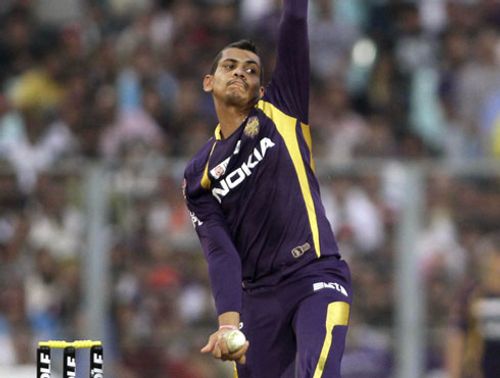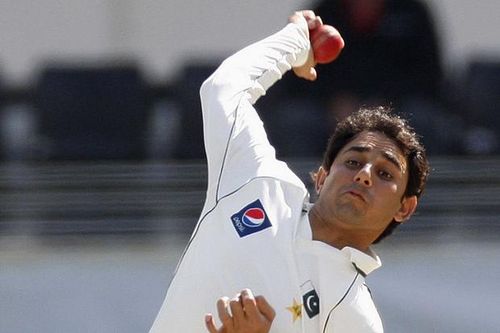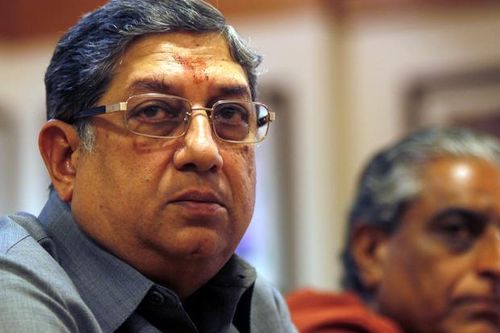
ICC's crackdown on chucking - Why the sudden flurry of activity?
↵

It’s mildly amusing, if not downright creepy, that the ICC’s clamp down on chucking in cricket has become an almost weekly affair now. The last couple of months have witnessed the likes of Sachitra Senanayake, Saeed Ajmal, Kane Williamson being banned from international cricket and numerous others like Prosper Utseya, Sohag Gazi, Al-Amin Hossain and Sunil Narine being reported for a suspect action.
Of course, the issue is justified, for none would deem it fair to flex the rules on the flexion of the elbow merely to accommodate a few eccentric mystery spinners. But the sudden thrust of action after years of sluggish lenience and more importantly, the timing of it all have attributed a conspiratory motive to ICC’s move. Clearly, with the World Cup only months away, there’s hardly any rationalization behind ICC’s sudden enthusiasm to stamp down on players with dodgy actions.
A sinister ploy to weaken teams?
In a recent interview with AFP, former Pakistan pacer Waqar Younis publicly questioned the timing of the cricket authorities’ crackdown on chucking and proposed that bowling laws be relaxed in case of spinners. The latter part of his statement, although somewhat ludicrous, is understandable, for Pakistan have ended up losing two of their frontline bowlers to ICC’s policing.
Both Mohammed Hafeez and Saeed Ajmal have been reported for suspect bowling action with the latter facing a race against time to rectify his action and get it sanctioned by the ICC before the team sheets are submitted for the 2015 World Cup. No wonder, Pakistan’s preparations for the big tournament have been hit hard and one can empathize with Waqar when he suggests the impossible.
Hafeez, as the Pakistan coach says, has been left traumatized by the whole episode and would require time to get back to his rhythm. A deceitful action is certainly detrimental to the morality of the gentleman’s game, but having said that, why is the ICC so keen to chuck out the chuckers all of a sudden after decades of silent spectatorship?
The curious case of Saeed Ajmal

Once in an interview during a KKR match, Wasim Akram had conceded that the Pakistan Cricket Board was not entirely oblivious to the problem lurking behind Ajmal’s delivery stride. Yet, he was better than several others and the PCB unleashed him late at 30 years of age after having a good look at the situation prevailing in international cricket.
What’s more bewildering is the fact that Ajmal had been reported for an illegal bowling in 2009, but was subsequently cleared after undergoing extensive medical examinations that reported an elbow injury. Yet, barely five years later, he was found bending his elbow up to 43 degrees – much more than the permissible 15 degrees, that too six times in an over. His doosra had an elbow extension of 42 degrees, the off-break measured 43 degrees and the quicker ones were the least offensive at 39 degrees.
So how does one cleared on medical grounds five years back end up being enforced a ban now because of the same reason? Was Ajmal a conjurer enough to change his bowling actions overnight? Or if he had been feeding on greyer pastures for long, why had the ICC allowed it? Or is it simply the new rules and the new Chairman with an uncanny passion for exercising stringency to the ceiling limit?
The ICC revamp – merely a coincidence?
The fact that expelled BCCI President Narayanaswamy Srinivasan’s ascendency to ICC Chairmanship in July this year coincided with ICC’s extensive program of scrutinizing bowlers across nations and empowering on field umpires to call for illegal bowling renders the whole idea a peculiar angle. It is of common opinion that Srinivasan, for all his antics, is a suspicious figure who’s as infamous for his bias as for his blatant lies.
However, strange it may sound, records suggest that as many as 8-9 frontline international bowlers have been reported for suspect action during the last two months. Funnily enough, that list includes no Indians. Hell, no cricketer from England, Australia or India is included in the infamous register. Favoritism much?
Yes, there have been a few Indians reported for illegal bowling in the last few years at domestic level, but the cases have been mostly benign and concerned old warhorses who, honestly speaking, possess no realistic chance of donning the national colours ever again. In fact, no Indian has been called in an international match since 1983.
Is the Big Three domination lurking somewhere down the line?
Australia coach Darren Lehmann had upheld ICC’s decision to have a crackdown on players as ‘good for the game’ ahead of their bilateral series against Pakistan in the UAE. Although disguised diplomatically, Lehmann’s relief at not having to play Ajmal in the preparatory series with the World Cup only four months away was pretty apparent.
Interestingly, Lehmann (along with Anil Kumble) did have a role, no matter how insignificant, to play in instigating the crackdown on players as a member of the governing body’s Cricket Committee whose duty is to offer recommendations on ‘cricket-playing matters’ to the Chief Executives’ Committee and subsequently, the International Cricket Council.
So what’s with Srinivasan’s promise of dispatching equivalent authority to all boards and alleviating the game of all notoriety? How come India remains the sole subcontinent team with no international bowler being reported while Australia and England stand out among the Prosper Utseyas and Sunil Narines? Yes, the implications are far-fetching, but definitely not what you can toss into the dustbin without a second thought.
The mystery of the mystery spinner – Narine’s conundrum

Sunil Narine and Srinivasan’s bias remind me: How is it that Narine was permitted to bowl throughout the CLT20 but reported just before the finals against the Chennai Super Kings, the franchisee Srinivasan owns? Does it help if I say Narine had taken 12 wickets in 5 matches prior to that and had been the wrecker-in-chief for the Kolkata franchisee during the tournament?
The surprise doesn’t end here though. For reasons that defied logic, Narine’s skipper in the franchise, Gautam Gambhir wasn’t asked a single question on the off-spinner’s weirdly timed ban or on a more generalised topic of chucking. Apparently, the whole of a certain cricket website that covered the match till the end of the presentation ceremony does not have the word ‘Narine’ in it. BCCI’s hand? Well, I’ll leave that for open interpretation.
Meanwhile, it may not be too off-topic to mention here that Kumar Dharmasena, who’s been the chief intimidator, reporting bowlers day in and day out, had himself been investigated by the ICC in 1998 for overstretching his already obscure bowling action to illegal proportions before being cleared two years later. Irony? Check.
The white monks of the game
“I’m not a great fan of Ojha. That’s because of his suspect action. That’s how bluntly I can put it,” was Bishan Singh Bedi’s candid answer to The Telegraph during Cricket Association of Bengal’s Annual Awards Ceremony in July, 2012.
This was hardly the first instance of an Indian being accused of cheating and escaping in cricket. While Pragyan Ojha had to face the flak from his own countryman, Harbhajan Singh had a more favorable opposition in former Australian umpire Darrell Hair. Given the national superstar that he is, Harbhajan escaped by merely scoffing at Hair for the latter’s typical Australian publicity stunt ‘to sell their books’.
It seems pertinent to mention here that both Ojha and Harbhajan had been performing for years wearing full sleeves. Not to get impulsively conclusive here, both of them had been suspected, accused and indicted time and again on cricket forums over the years despite being never called during an international match. For all the sake of purity of the game, the question over the white monks being indeed white continues to hover in ignorance.
Nothing more than pretentiousness?
Not many would forget the emphasis that Srinivasan laid on the immediate changes that ICC would bring about for the benefit of the game. While the lesser mortals might have associated it with rapid tracking and subsequent investigations of spot-fixing cases, higher intellectuals like the cricket authorities had in mind issues like chucking.
Experts may disregard chucking as more like an appendix to cricket – some even extend their opinion in favour of it – but when the ICC imposes such importance on it that it eclipses the outcomes of international matches and the Champions League T20 finals, one gets the hunch of something pretentious. So is this ICC’s modus operandi to make a tangible difference to the game of cricket quickly and manifestly?
The assumptions may seem fanciful, the conspiracy theories bizarre and whimsical, but the facts and the course of events lie firmly in defence of this article. Conclusions remain open for interpretation, but the implications are hardly ambiguous.
This article is a product of tireless research by co-author Siddarth Khandelwal.